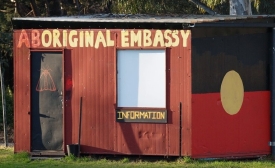indigenous

On the conflict between Australia's image abroad and the reality of the aboriginal communities on the ground.
When I was referred to a documentary film on India’s scientific greats by its maker Raja Choudhury this week, I was wondering if there’d be anything beyond what I already know about them in the hour-long film. To find this out, it also meant dedicating an hour to watch the film on YouTube with its infamous buffering time. But I was ready to endure that, partly because the title of the film was inviting — The Quantum Indians — and partly because I had not been able to take up Raja’s earlier offer to feature in this film as an ‘expert’ on India’s science.
It might be the cleanest Mexican soap opera around. The passionate love scenes that are a staple of the genre were reduced, bowing to conservative local sensibilities, to a few pecks on the cheek and hand-holding as innocent as junior high schoolers on a first date. It was not the only accommodation made by producers of what is considered the first “telenovela,” as soap operas are known here, entirely in an indigenous language, Maya, and with a story line rooted in the community.
Political leaders in central and south America are looking to Maori as a way to enhance their own traditional communities. Federation of Maori Authorities' chair Traci Houpapa visited a number of countries in Latin America earlier this year with the prime minister. She was asked by leaders there why Maori have become so economically and strategically sophisticated, and how they can empower their first nations peoples.
Tjanara Talbot will be travelling to Canada this month as part of an artist residency program between Parramatta and Montreal called the Urban Indigenous Artist Exchange Program. She will stay at the Darling Foundry in Montreal for three months, fully paid. To date, three artists have taken part in this work program which developed with the idea of expanding Indigenous artistic practice internationally.







